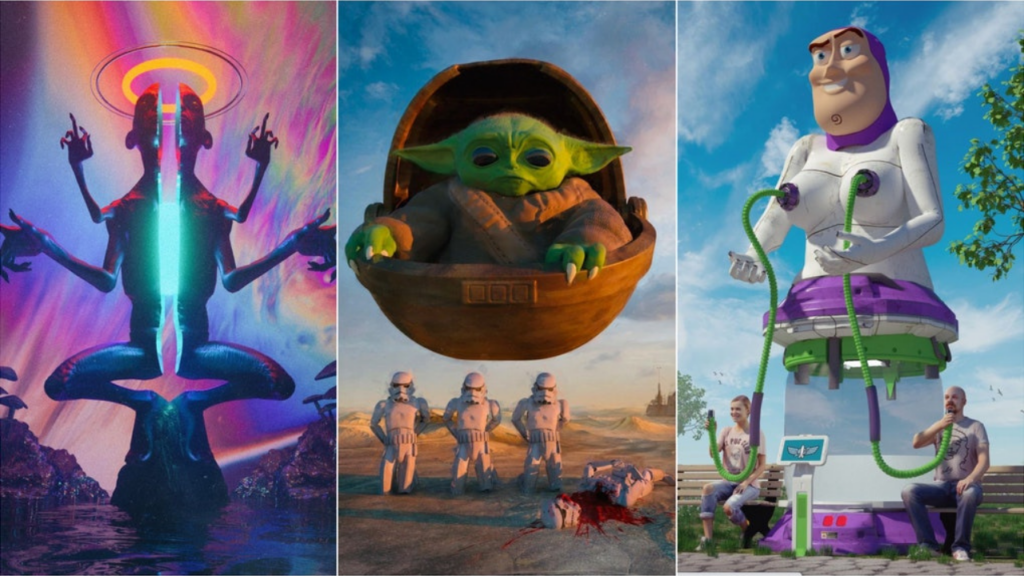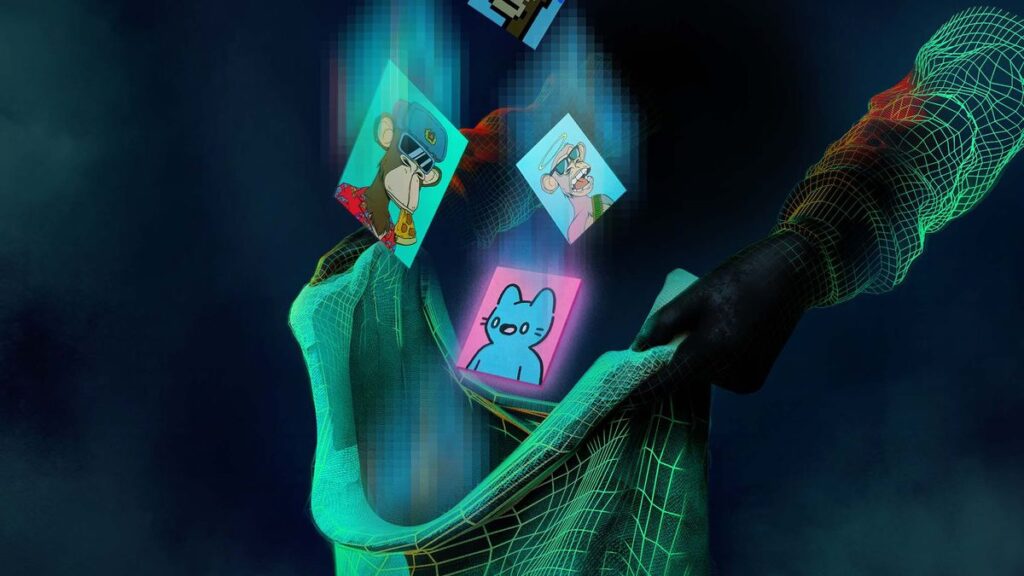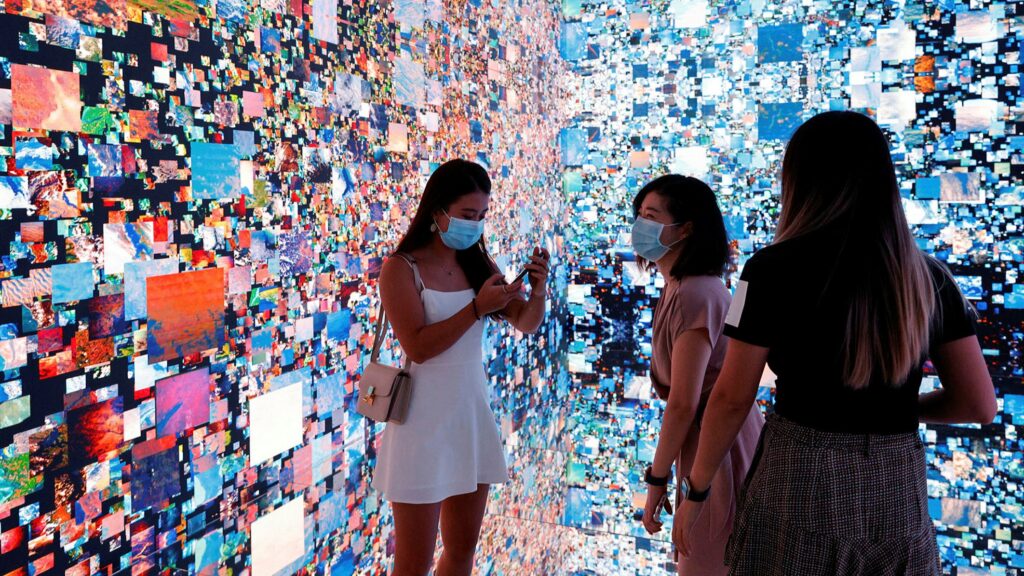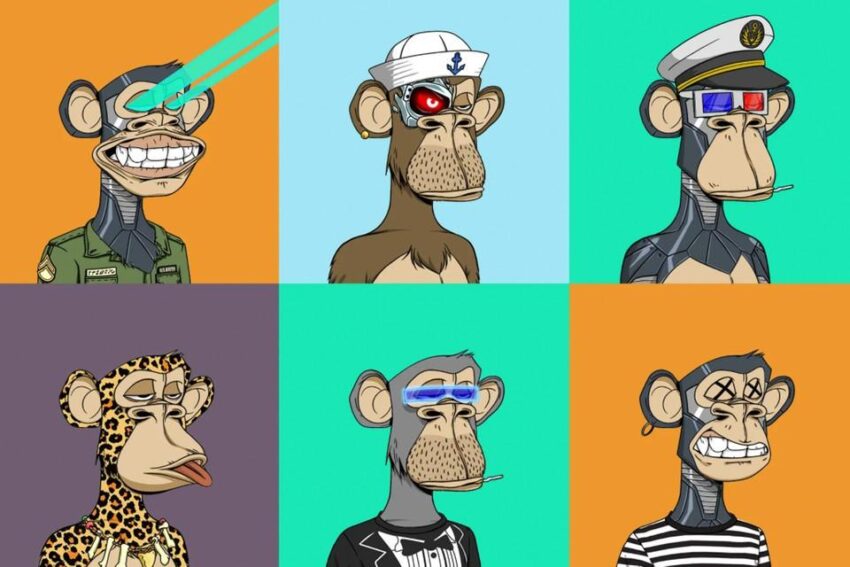In recent times, we’ve seen how NFTs have seemingly appeared out of nowhere and taken the world by storm.
In this madness, it looks as if people have lost their minds and started paying millions of dollars for works of art that exist only in the digital realm. So, what is NFT art?
So, like any sane person, you’re probably wondering whether NFT art or crypto art is the real deal or just another scam.
After all, who on earth is crazy enough to pay for digital art with digital dollars?
With all of this in mind, join us as we take a closer look at NFTs and whether you should become a digital art collector.
What are NFTs?

An NFT or non-fungible token is a digital asset that has been tokenized and stored on a blockchain. Note: the Ethereum blockchain is the primary host for all NFTs, which is why Ether is the primary currency used for NFT-related transactions.
Because of this, NFT art has taken off in a big way, thanks to the freedom that it offers artists. Previously, artists needed to rely on auction houses and art galleries to showcase and distribute their works, but thanks to NFTs, all of that has changed.
Instead, NFTs allow artists to distribute and showcase their work independently and better still, all proceeds from the sale of NFTs are passed directly to the artist. And as a result, the NFT art scene has grown exponentially, with hundreds of new artists flooding in.
Are NFTs a scam?

The answer is a resounding no – NFTs are not a scam.
The technology behind them is sound and makes the concept of digital ownership a reality. Thanks to NFTs, it is now possible to certify ownership of a digital asset, which is one reason why NFTs have exploded into popularity.
Of course, this is not without its fair share of criticisms.
Take the popular online art community; DeviantArt, for example – where members have complained about how their works have been stolen to create NFTs despite having measures introduced to combat this.
All of this highlights the problem with digital art and NFTs as a whole – that they can be copied perfectly and distributed without limit. And while you may be the rightful owner of an art piece, there’s nothing stopping anyone else from copying it.
Hence, this is why many have pointed out that the market for NFTs is a bubble that will probably burst in the near future. While there is some merit to this, i.e. extreme hype coupled with the fear of missing out, there are several reasons why NFTs are here to stay.
First of all, NFTs are the first crypto-related asset to be independent of crypto value determined by exchange activity like that of OKX.com, which could signify that NFTs have the potential to be used as more than just tokens for digital art.
Secondly, the technology behind NFTs has not yet been fully explored. And already, there appears to be plenty of promise for NFTs in the world of MMORPG gaming, where NFTs can be used to certify ownership of rare items.
All of which ties in with our third port – the human desire for authenticity and ownership. NFTs allow individuals to validate their ownership of a particular asset.
Take Beeple’s Everydays – The First 5000 Days, for example; while others may be able to copy and duplicate it endlessly, the holder of the NFT is the valid owner of the painting. And the psychological impact this has should not be understated.
Conclusion

Like how digital currencies changed the way we think about money, NFT art and NFTs, in general, will likely alter how we think about ownership.
Due to this, it wouldn’t be amiss to say that NFTs are here to stay.

